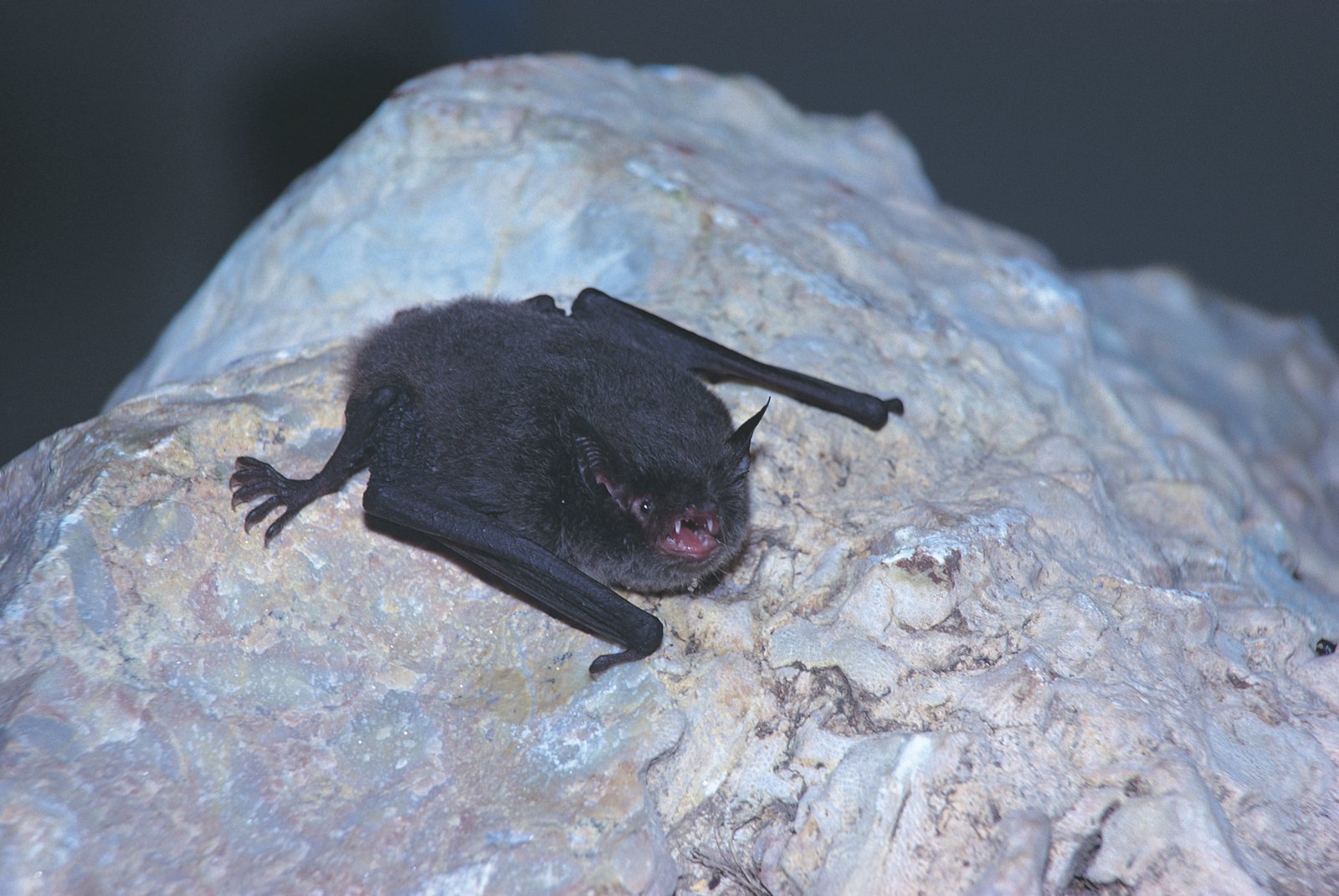Fishing Bats
Even though all Bangu (Bats) are amazing animals, the Large-footed Myotis is an especially interesting microbat that can fish. Written by Sara Kianga Judge, neurodiverse Walbanja-Yuin woman.
On this page...
Even though all Bangu (Bats) are amazing animals, there is one little Microbat who is especially interesting! The Large-footed Myotis doesn’t just eat flying insects from the sky – they go fishing!
How Fishing Bats fish
With large feet and long toes, Fishing Bangu have the perfect tools for catching water insects and small fish and prawns swimming close to the surface. Fishing Bangu dip their toes and drag them through the water to catch their prey.
Fishing Bangu also listen carefully to the water. Like all Microbats, the Fishing Bangu uses sound and echoes (echolocation) to find their food in the dark. When small water animals move around, they create ripples and splashes that the Fishing Bangu can find with their echolocation.

With large feet and long toes, Fishing Bangu have the perfect tools for catching water insects and small fish and prawns swimming close to the surface.
Image: Steve Parish© Steve Parish
Many ways of learning from Fishing Bats
Having the right tools for the job and listening to Country is an important lesson that Fishing Bangu can teach us if we respectfully watch and learn from them.
When I am out fishing with my cousins, we sometimes see Fishing Bangu swooping down through our torchlight and across the water to catch their prey. I imagine how our First Nations Ancestors would have seen Fishing Bangu in the firelight of their nawira (tied-bark canoes) too – everyone fishing on the rivers and estuariess together!
We ask what they can teach us. This is First Nations knowledge – learning through listening and our relationships with others.
First Nations Peoples knew who fishing Bangu were, we shared the waters with them. When we listen to Country, we pay attention to who is around and what they are doing.
Recently, scientists here in Sydney noticed that Fishing Bangu weren’t just hunting on freshwater like they had first thought. The Fishing Bangu were also hunting from saltwater! Just like my First Nations Ancestors, the scientists learned this by observing the Fishing Bangu flying over Sydney Harbour to hunt. Even though scientists measure what they see in different ways to First Nations people – we all start by taking notice and asking questions about what we can learn.
Bangu are really interesting animals! Learn more about Microbats and Flying-foxes.

Like all Microbats, the Fishing Bangu uses sound and echoes (echolocation) to find their food in the dark.
Image: Allan Young© Australian Museum
Further reading
- The Port Jackson, Sydney study of myotis Fishing Bangu hunting on saltwater can be found here.
- Did you know that the myotis Fishing Bangu is a mascot for the Burramatta River? To find out more about how you can help care for Fishing Bangu habitats, visit: ourlivingriver.com.au
Editorial note: Some animal names have been capitalised to give agency to Country by First Nations writers. Find out more about why we capitalise English language in reading Who is Country.
About the author
Sara Kianga Judge is a neurodiverse Walbunja-Yuin woman who grew up on Burramattagal Country. She is an environmental scientist, geographer and artist passionate about accessible science communication and helping people to grow meaningful relationships with Country.


